 W
WAn aerial bomb is a type of explosive or incendiary weapon intended to travel through the air on a predictable trajectory, usually designed to be dropped from an aircraft. Aerial bombs include a vast range and complexity of designs, from unguided gravity bombs to guided bombs, hand tossed from a vehicle, to needing a large specially built delivery vehicle; or perhaps be the vehicle itself such as a glide bomb, instant detonation or delay-action bomb. The act is termed aerial bombing. As with other types of explosive weapons, aerial bombs are designed to kill and injure people and destroy materiel through the projection of blast and fragmentation outwards from the point of detonation.
 W
WAnti-personnel mines are a form of mine designed for use against humans, as opposed to anti-tank mines, which are designed for use against vehicles. Anti-personnel mines may be classified into blast mines or fragmentation mines, the latter may or may not be a bounding mine.
 W
WAn anti-tank mine is a type of land mine designed to damage or destroy vehicles including tanks and armored fighting vehicles.
 W
WArtillery is a class of heavy military ranged weapons built to launch munitions far beyond the range and power of infantry firearms. Early artillery development focused on the ability to breach defensive walls and fortifications during sieges, and led to heavy, fairly immobile siege engines. As technology improved, lighter, more mobile field artillery cannons developed for battlefield use. This development continues today; modern self-propelled artillery vehicles are highly mobile weapons of great versatility generally providing the largest share of an army's total firepower.
 W
WA bombardment is an attack by artillery fire or by dropping bombs from aircraft on fortifications, combatants, or towns and buildings.
 W
WA cluster munition is a form of air-dropped or ground-launched explosive weapon that releases or ejects smaller submunitions. Commonly, this is a cluster bomb that ejects explosive bomblets that are designed to kill personnel and destroy vehicles. Other cluster munitions are designed to destroy runways or electric power transmission lines, disperse chemical or biological weapons, or to scatter land mines. Some submunition-based weapons can disperse non-munitions, such as leaflets.
 W
WA depth charge is an anti-submarine warfare (ASW) weapon. It is intended to destroy a submarine by being dropped into the water nearby and detonating, subjecting the target to a powerful and destructive hydraulic shock. Most depth charges use high explosive charges and a fuze set to detonate the charge, typically at a specific depth. Depth charges can be dropped by ships, patrol aircraft, and helicopters.
 W
WField artillery in the American Civil War refers to the artillery weapons, equipment, and practices used by the Artillery branch to support the infantry and cavalry forces in the field. It does not include siege artillery, use of artillery in fixed fortifications, or coastal or naval artillery. Nor does it include smaller, specialized artillery classified as small arms.
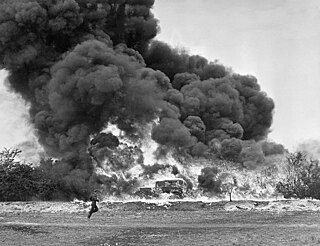 W
WA flame fougasse is a type of mine or improvised explosive device which uses an explosive charge to project burning liquid onto a target. The flame fougasse was developed by the Petroleum Warfare Department in Britain as an anti-tank weapon during the invasion crisis of 1940. During that period, about 50,000 flame fougasse barrels were deployed in some 7,000 batteries, mostly in southern England and a little later at 2,000 sites in Scotland. Although never used in combat in Britain, the design saw action later in Greece.
 W
WA fougasse is an improvised mortar constructed by making a hollow in the ground or rock and filling it with explosives and projectiles. The fougasse was used by Samuel Zimmermann at Augsburg in the sixteenth century, referred to by Vauban in the seventeenth century, and well known to military engineers by the mid-eighteenth century. This technique was used in several European wars, the American Revolution, and the American Civil War. The term is still used to describe such devices.
 W
WFragmentation is the process by which the casing of a projectile from a bomb, barrel bomb, land mine, IED, artillery, mortar, tank gun, or autocannon shell, rocket, missile, grenade, etc. is shattered by the detonation of the explosive filler.
 W
WThe Goliath tracked mine was a series of two unmanned ground vehicles used by the German Army as disposable demolition vehicles during World War II. These were the electrically powered Sd.Kfz. 302 and the petrol-engine powered Sd.Kfz. 303a and 303b. They were known as beetle tanks by the Allies.
 W
WA grenade launcher is a weapon that fires a specially-designed large-caliber projectile, often with an explosive, smoke or gas warhead. Today, the term generally refers to a class of dedicated firearms firing unitary grenade cartridges. The most common type are man-portable, shoulder-fired weapons issued to individuals, although larger crew-served launchers are issued at higher levels of organisation by military forces.
 W
WThe Hedgehog was a forward-throwing anti-submarine weapon that was used primarily during the Second World War. The device, which was developed by the Royal Navy, fired up to 24 spigot mortars ahead of a ship when attacking a U-boat. It was deployed on convoy escort warships such as destroyers and corvettes to supplement the depth charges.
 W
WHellburners were specialised fireships used in the Siege of Antwerp (1584–1585) during the Eighty Years' War between the Dutch rebels and the Habsburgs. They were floating bombs, also called "Antwerp fire", and did immense damage to the Spanish besiegers. Hellburners have been described as an early form of weapons of mass destruction.
 W
WAn improvised explosive device (IED) is a bomb constructed and deployed in ways other than in conventional military action. It may be constructed of conventional military explosives, such as an artillery shell, attached to a detonating mechanism. IEDs are commonly used as roadside bombs.
 W
WIncendiary weapons, incendiary devices, incendiary munitions, or incendiary bombs are weapons designed to start fires or destroy sensitive equipment using fire, that use materials such as napalm, thermite, magnesium powder, chlorine trifluoride, or white phosphorus. Though colloquially often known as bombs, they are not explosives but in fact are designed to slow the process of chemical reactions and use ignition rather than detonation to start or maintain the reaction. Napalm for example, is petroleum especially thickened with certain chemicals into a 'gel' to slow, but not stop, combustion, releasing energy over a longer time than an explosive device. In the case of napalm, the gel adheres to surfaces and resists suppression.
 W
WA land mine is an explosive device concealed under or on the ground and designed to destroy or disable enemy targets, ranging from combatants to vehicles and tanks, as they pass over or near it. Such a device is typically detonated automatically by way of pressure when a target steps on it or drives over it, although other detonation mechanisms are also sometimes used. A land mine may cause damage by direct blast effect, by fragments that are thrown by the blast, or by both.
 W
WLimbo, or Anti Submarine Mortar Mark 10, was the final development of the forward-throwing anti-submarine weapon Squid, designed during the Second World War and was developed by the Admiralty Underwater Weapons Establishment in the 1950s.
 W
WThe M7 grenade launcher, formally rifle grenade launcher, M7, was a 22 mm rifle grenade launcher attachment for the M1 Garand rifle that saw widespread use throughout World War II and the Korean War. The M7 was a tube-shaped device, with one end slotting over the muzzle of the rifle and attaching to the bayonet mount, and the other end holding the grenade in place. Blank cartridges were loaded into the rifle prior to firing. When fired, the expanding gases generated by the cartridges propelled the grenade forward with considerable force. The M7 could fire grenades up to 200 metres, compared with the maximum of 30 metres achieved by a hand-thrown grenade.
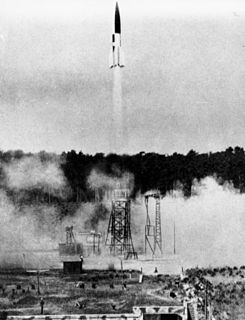 W
WIn military terminology, a missile, also known as a guided missile or guided rocket, is a guided airborne ranged weapon capable of self-propelled flight usually by a jet engine or rocket motor. Missiles have five system components: targeting, guidance system, flight system, engine and warhead. Missiles come in types adapted for different purposes: surface-to-surface and air-to-surface missiles, surface-to-air missiles, air-to-air missiles, and anti-satellite weapons.
 W
WThe MON-50 is a claymore shaped, plastic bodied, directional type of anti-personnel mine designed and manufactured in the Soviet Union. It is designed to wound or kill by explosive fragmentation. The mine is similar to the American M18 Claymore with a few differences.
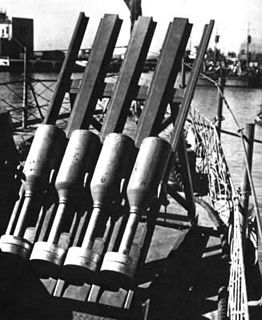 W
WMousetrap was an anti-submarine rocket used mainly during the Second World War by the U.S. Navy and the U.S. Coast Guard. Its development began in 1941 as a replacement for Hedgehog, a British-made projector, which was the first forward-throwing ASW weapon. Those, however, were spigot-launched, placing considerable strain on the launching vessel's deck, whereas Mousetrap was rocket-propelled. As a result, Mousetrap's four or eight rails for 7.2-inch (183 mm) rockets saved weight and were easier to install.
 W
WA shaped charge is an explosive charge shaped to focus the effect of the explosive's energy. Different types of shaped charges are used for various purposes such as cutting and forming metal, initiating nuclear weapons, penetrating armor, or perforating wells in the oil and gas industry.
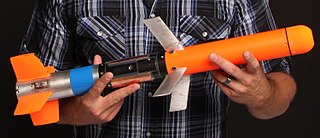 W
WThe Spike, also called the Forward Firing Miniature Munition (F2M2), is a small missile developed by the USA Naval Air Warfare Center Weapons Division (NAWCWD), NAVAIR's Weapons Division.
 W
WA naval mine is a self-contained explosive device placed in water to damage or destroy surface ships or submarines. Unlike depth charges, mines are deposited and left to wait until they are triggered by the approach of, or contact with, any vessel. Naval mines can be used offensively, to hamper enemy shipping movements or lock vessels into a harbour; or defensively, to protect friendly vessels and create "safe" zones. Mines allow the minelaying force commander to concentrate warships or defensive assets in mine-free areas giving the adversary three choices: undertake an expensive and time-consuming minesweeping effort, accept the casualties of challenging the minefield, or use the unmined waters where the greatest concentration of enemy firepower will be encountered.
 W
WThe OMAR Mine Museum in Kabul, Afghanistan, contains a collection of 51 types of land mines out of the 53 that have been used in that country. OMAR is an acronym for the Organization for Mine Clearance and Afghan Rehabilitation. The collection includes unexploded ordnance, cluster bombs and airdrop bombs used by the War in Afghanistan. The museum educates school groups to detect and avoid unexploded ordnance including landmines and cluster bomblets from historic and ongoing Afghan wars. The museum was seriously damaged in a July 1, 2019 attack.
 W
WPanjandrum, also known as The Great Panjandrum, was a massive, rocket-propelled, explosive-laden cart designed by the British military during World War II. It was one of a number of highly experimental projects, including Hajile and the Hedgehog, that were developed by the Admiralty's Directorate of Miscellaneous Weapons Development (DMWD) in the final years of the war. The Panjandrum was never used in battle.
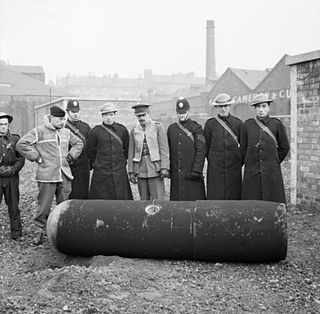 W
WA parachute mine is a naval mine dropped from an aircraft by parachute. They were mostly used in the Second World War by the Luftwaffe and initially by the Royal Air Force (RAF) Bomber Command. Frequently, they were dropped on land targets.
 W
WA pressure cooker bomb is an improvised explosive device (IED) created by inserting explosive material into a pressure cooker and attaching a blasting cap into the cover of the cooker.
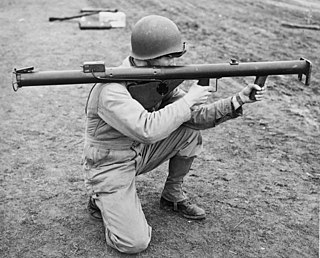 W
WA rocket launcher is a type of firearm that launches an unguided, rocket-propelled projectile, although the term is often used in reference to mechanisms that are portable and capable of firing actual rockets.
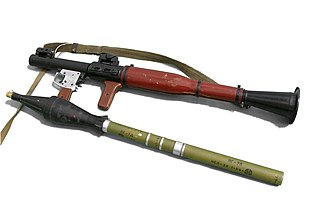 W
WA rocket-propelled grenade is a shoulder-fired missile weapon that launches rockets equipped with an explosive warhead. Most RPGs can be carried by an individual soldier, and are frequently used as anti-tank weapons. These warheads are affixed to a rocket motor which propels the RPG towards the target and they are stabilized in flight with fins. Some types of RPG are reloadable with new rocket-propelled grenades, while others are single-use. RPGs are generally loaded from the front.
 W
WThe RUR-4 "Weapon Alpha" was an American naval ahead-throwing antisubmarine warfare (ASW) rocket launcher. It was designed between 1946 and 1949 and was installed on warships from 1951 to 1969. Unlike depth charges, it was designed to attack enemy submarines without requiring the attacking ship to be located directly above the submarine being attacked.
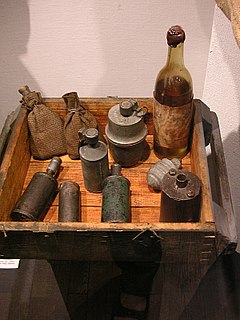 W
WA satchel charge is a demolition device, primarily intended for combat, whose primary components are a charge of dynamite or a more potent explosive such as C-4 plastic explosive, a carrying device functionally similar to a satchel or messenger bag, and a triggering mechanism; the term covers both improvised and formally designed devices.
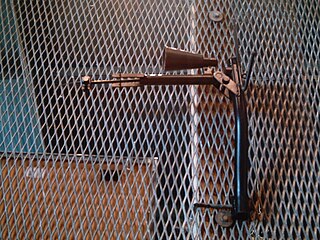 W
WThe SM-70 is an East German directional antipersonnel mine developed specifically to combat Republikflucht (defection) across the Inner German Border (Grenze) into West Germany.
 W
WSquid was a British World War II ship-mounted anti-submarine weapon. It consisted of a three-barrelled mortar which launched depth charges. It replaced the Hedgehog system, and was in turn replaced by the Limbo system.
 W
WThe modern era of defending American harbors with controlled mines or submarine mines began in the post-Civil War period, and was a major part of US harbor defenses from circa 1900 to 1947.
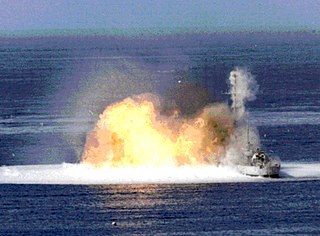 W
WA thermobaric weapon, aerosol bomb, or vacuum bomb is a type of explosive that uses oxygen from the surrounding air to generate a high-temperature explosion. In practice, the blast wave typically produced by such a weapon is of a significantly longer duration than that produced by a conventional condensed explosive. The fuel–air explosive is one of the best-known types of thermobaric weapon.
 W
WUnexploded ordnance, unexploded bombs (UXBs), and explosive remnants of war (ERW) are explosive weapons that did not explode when they were employed and still pose a risk of detonation, sometimes many decades after they were used or discarded. UXO does not always originate from wars; areas such as military training grounds can also hold significant numbers, even after the area has been abandoned. UXO from World War I continue to be a hazard, with poisonous gas filled munitions still a problem. When unwanted munitions are found, they are sometimes destroyed in controlled explosions, but accidental detonation of even very old explosives also occurs, sometimes with fatal results.
 W
WA warhead is the explosive or toxic material that is delivered by a missile, rocket, or torpedo. It is a type of bomb.